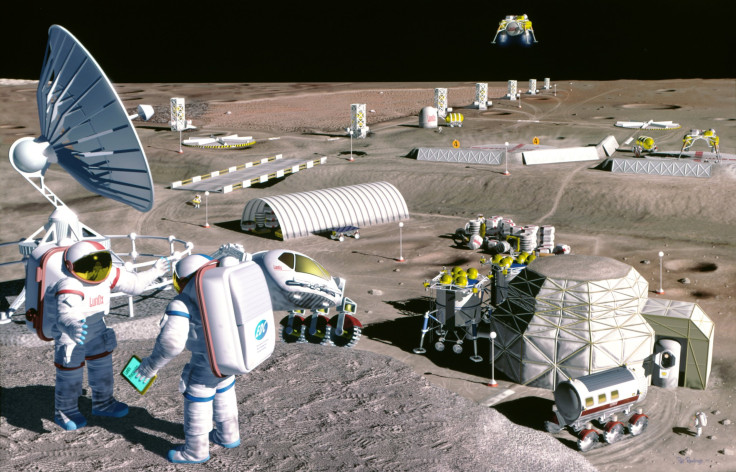Lunar Missions Could Make Mars Trips Affordable

Scientists and astronomers have long believed that before mankind can undertake a voyage to Mars, another trip to the moon is imperative. The moon, with its hostile environment and extremely low gravity, can provide NASA with a crucial testing ground for technology that might one day be used to establish colonies on the red planet.
A new study, published Monday to mark the 46th anniversary of the first moon landing, claimed that sending humans back to the moon could cost 90 percent less than expected -- bringing estimated costs down from $100 billion to $10 billion. The NASA-funded study, conducted by NexGen Space LLC, posits that one of the major hurdles to future manned missions to the moon -- the lack of adequate funds -- might not be such a stumbling block after all.
“Enabled by public-private partnerships, NASA’s current human spaceflight budget is sufficient to return humans to the surface of the Moon and develop a permanent lunar base,” the study found. “Assuming NASA receives a flat budget, these results could potentially be achieved within NASA’s existing deep space human spaceflight budget.”
Already, the space agency is saving significant amounts of money through partnerships with companies like SpaceX and Orbital ATK. In order to establish a human presence on the moon with the $4 billion NASA receives each year for human spaceflight, the agency would have to employ a similar technique.
SpaceX, for instance, charges NASA about $4,750 for every kilogram sent to orbit aboard its Falcon 9 rocket, according to an estimate by the National Space Society (NSS) -- an American nonprofit and advocacy group. This is far less than the $46,000 per kilogram NASA spends on payload delivery through the Saturn V rocket. Newer models, such as the SpaceX Falcon Heavy rocket, might be even cheaper.
Another technique that might enable NASA to significantly cut costs of future missions to Mars is the mining of hydrogen on the moon, the study found.
“Mining fuel from lunar poles and transporting it to lunar orbit for use by other spacecraft reduces the cost of sending humans to Mars and other locations beyond low Earth orbit,” the authors of the study wrote. “These commercial fuel depots in lunar orbit have the potential to cut the cost of sending humans to Mars by more than $10 billion per year.”

Before that can happen, NASA and the private companies it partners with would need to send robotic probes to the lunar poles to find out just how much hydrogen is available and whether it’s economically viable to extract it.
“While we now know there is hydrogen, likely in the form of water, in the cold traps of the lunar polar craters, it is possible that the robotic scouting missions will not discover a source of hydrogen that enables the economical production of cryogenic propellant,” the authors wrote, in the study. “If this happens, the proposed strategy for lunar development will need to be amended, and the plans for prospecting and mining will need to be delayed and potentially cancelled.”
However, all things considered, a fresh manned mission to the moon and the establishment of a lunar outpost seem highly affordable -- if the recommendations outlined in the study are implemented.
“This is the way that America will settle the final frontier, save taxpayers money and usher in a new era of economic growth,” Jeff Feige, the chairman of the board for the Space Frontier Foundation, a U.S.-based space advocacy group, said, in a press release.
© Copyright IBTimes 2024. All rights reserved.





















